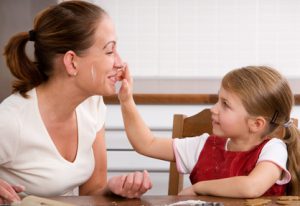Sometimes it’s best to not give your children an immediate answer. I know they’ll complain. After all, they want an answer “now.” However, there are times to “take 10” (or 20 or 30 or even a whole day) before answering. Not all answers come easily or quickly. In fact, let me offer 4 times it’s definitely best to wait before answering.
- Don’t give an immediate answer when you’re distracted or busy. You might give an answer to a question you haven’t even fully heard. You might give an answer you didn’t intend. Only answer when you can give your full attention and thought to your child and their question or request.
- Don’t give an immediate answer when you are upset or feeling guilty. When you feel upset or guilty you might “give too much.” You might answer out of our guilt rather than wisdom and values. You might answer out of anger about something unrelated to your children rather than answering out of love for your children and concern for their well-being.
- Don’t give an immediate answer when your children are whining or yelling. If you give an answer during that time you will likely answer out of agitation or, if you’re in public, fear of embarrassment. If you answer by giving in to their request to avoid embarrassment, you have just reinforced their behavior. You have taught them an effective way to get what they want. You’ve taught them how to manipulate your answer. Better to wait.
- Don’t give an immediate answer when you’re feeling tired or insecure about your parenting. Once again, this may lead us to give an answer that doesn’t align with your family values.
If it’s best to not offer an immediate answer at these times, what can we do? How can we prepare for these moments?
- Before a situation even arises, establish your family’s core values and boundaries. Talk about those values often. Once your core values are established, you can base your decisions and answers on those values and boundaries. Remember, these are your whole family’s values and boundaries.
- Establish a healthy support group. It takes a village to be a good parent. Gather a group of like-minded parents around you. Support one another. When you’re not sure about how to answer a question or request, use a “lifeline” by calling a friend in your support group. Talk it through with them.
- Tell your child you can’t answer right now but you can tell them an answer at a specific time in the near future. Remember, you want to give an answer that aligns with the values and boundaries you have established. You may need time to think about that answer. You may want to talk with a friend and “throw around some ideas” about the best response. An important caveat though–get back to your child by the time you stated. They need to know they can trust you to follow through on your word.
- Talk with your child rather than give an immediate answer. Ask questions. Talk about their request and what it really means to them. Talk about your concerns as well as areas in which you see their growth. Tell them how you are proud of them. Offer an age-appropriate explanation for your response so they can understand how it fits in with your family’s values and boundaries. Talking with your child about their request and your answer helps them learn to think through the request on their own, an important skill as they mature.
Put these actions in place and remember, you can always “take 10” before answering your child. In fact, it may be best to take a day to “sleep on it” before answering to make sure you answer wisely and in accordance with your values.








